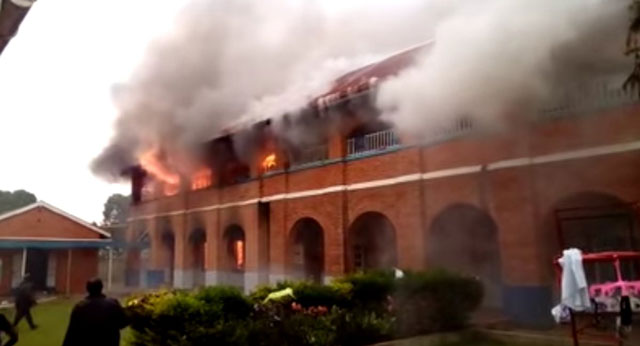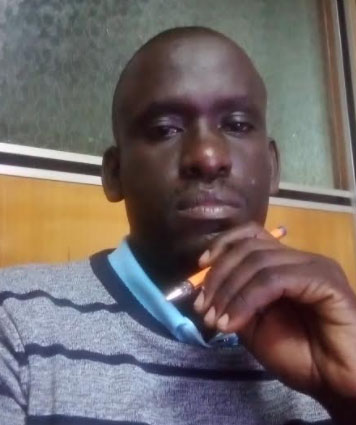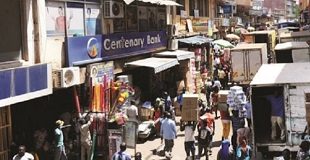
COMMENT | Samson Tinka | The news on the morning of 28th April 2021 was the fire at Budo Grace- girl’s dormitory. Luckily no life was lost. On the same day, another building at a school not far from Budo was also reported to be on fire.
According to the Uganda Police annual crime report of 2020, 1015 fire emergencies were reported in the year, and this was 1.6% increase compared to 999 fires reported in 2019. Of these cases, 49 were arson attacks, 173 due to charcoal stove fires, 163, electrical short circuits and 50 incidents were a result of negligence.
This report indicates different causes of fire. And by the figures above, the likely hood of fire in either our homes, offices, stores, cars, warehouses, churches, arcades, is now real. We actually all live with a risk of fire in our life time.
The difference between destruction, and property saved or life and death, could be in what knowledge we have about fire. What preventive means do we have in place and also how ready we are to fight fire?
When we ask and answer the above questions, then the risk of fire is majorly mitigated.
What is fire?
Three things are needed for fire to happen, oxygen, fuel and heat…… Or say oxygen, naked flame and combustible material. Things like paper, fire wood, are combustible materials and when in contact with naked flame with oxygen in un controlled environment, a fire will be start.
In most cases fire starts small and when detected, it can be fought and controlled. Even when its big, it can be controlled either in a short run or long run but with minimal destruction.
Five classes of fire
- Class A Fires-Fires involving solid materials such as wood, paper or textiles
- Class B fires- Fires involving flammable liquids such as petrol, diesel or oils
- Class C Fires-Fires involving Gases
- Class D Fires-Fires involving Metals
- Class E fires- Fires involving electrical apparatus.
What does public health ACT say?
THE PUBLIC HEALTH ACT. Statutory Instrument 281—1. The Public Health (Building) Rule
- Provision of fire escapes, and fire extinguishers. Every building which is more than two storeys in height and every public building or building of the warehouse class, hotel, boarding house or block of flats shall be provided with at least two exits at ground level and adequate means of escape in the case of fire, and there shall be provided and maintained, so as to be readily accessible, means for extinguishing fire, which shall be adequate and suitable to the satisfaction of the local authority.
How do we prevent fire?
There are three ways how we can prevent fire. They are famously and commonly called the 3Es.
They are:
Engineering
Is provision of equipment that can detect, communicate presence of fire and also provide equipment to use to fire. This process includes, installation of fire detection systems like smoke/heat/humidity detectors, fire panels, sounders, etc.
Education
Having best fire detection and prevention equipment is not enough, there is a need of knowledge by people around these equipment’s. Knowledge through training, conducting fire dry drills, evacuations drills, etc. Educations helps in three ways, application of equipment’s on site, evacuation of affected people and minimizing the overall fire effect. Existence of equipment within un knowledgeable people is useless in prevention, detecting, firefighting and rescue operations.
Enforcement
Enforcement is also critical. This involves routine scheduled service and maintenance of detection and fighting equipment’s, making sure that evacuation routines are not blocked by furtinuture, stationery or physically locked with keys and the keys holders are miles away from the affected scene. Enforcement also aids in having routine safety committees/fire marshals or champions meet regularly, conduct fire risk assessments with possible mitigations.
How prepared are we as Ugandans?
As you walk through different arcades as tall as five storied, as big as seated on an acre of land, no fire detection system is visible.
When lucky, you see an expired fire extinguisher placed somewhere hidden. Fire extinguishers should be serviced at least twice a year to replace expired gases inside, check pressure gauge, safety pins, seals etc. no arcade should be commissioned without a fully functioning fire detection system with a qualified safety office on site 24/7. The reason is that the risk exposure is high.
Imagine an arcade like Mutaasa Kafeero with a population of 1000 people and goods worth billions of shillings. It need advanced preventive measures.
Secondly the arcades are intertwined. It’s always a line of buildings connected to one another. Fire in one building can affect 10 arcades. The general public are either very ignorant on the importance of fire detection and prevention systems or adamant on investing in such vital facilities.
The energy with which KCCA, URA and Uganda Government enforce trading license, chase street vendors, and take such harsh measures, should be the same energies, dedication put across while enforcing safety systems.
No commercial, public building should be given occupancy permit without fire systems. As a city, we are seated with a calamity in waiting.
Quite often police fire department is blamed for taking long to reach as part of rescue operation. This is a scapegoat. Police should find the building owners using the available apparatus. Court at Buganda Road should start prosecuting building owners without safety systems specifically fire related gadgets.
KCCA and Ministry of Gender, Labour and social development its your mandate to have this standard effected.
Fire systems should be part of Inspector of school check list. The beauty with these systems is that they are not costly. Sh 3million is enough to obtain an addressable or conventional fire detection system. Such systems give early warning of emerging fire and this is vital in preventing fighting and rescue operations.
For parents and guardians, do a survey of the school safety and security systems before depositing your child.
It’s no longer academic performance levels alone that should be critical to parents but also safety, security, housekeeping, reputation, feeding, environment. Those are what makes a school a school.
 Samson Tinka is a safety and security consultant | Director Matts Secure Solutions Ltd | tindsam@yahoo.com
Samson Tinka is a safety and security consultant | Director Matts Secure Solutions Ltd | tindsam@yahoo.com
 The Independent Uganda: You get the Truth we Pay the Price
The Independent Uganda: You get the Truth we Pay the Price


